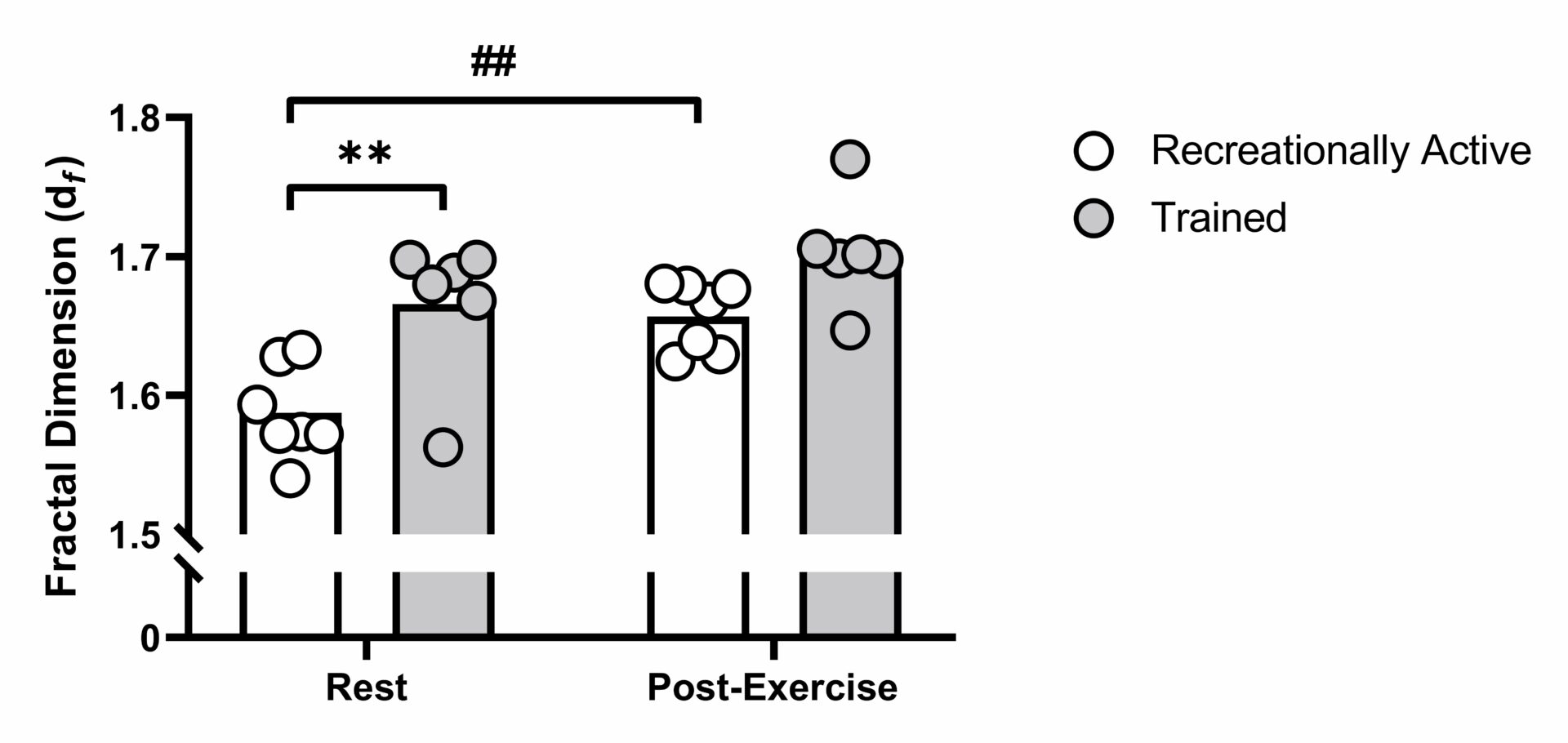Introduction
Endurance training is typically associated with high training volumes, often with insufficient rest, leading to chronic systemic stress [1]. This may alter factors that promote blood coagulation, such as enhanced sympathetic activity and inflammation [2]. Moreover, although regular exercise typically protects against cardiovascular disease, a single bout of maximal exercise can paradoxically trigger a cardiac event or stroke [3]. This may be attributed to exercise-induced hypercoagulability and the formation of denser blood clots [4]. Interestingly, little is known regarding the impact of training status on resting and post-exercise hemostasis.
Recently, a novel and sensitive rheology method for assessing hypercoagulability has been developed. The method provides a measure of incipient clot microstructure through the determination of fractal dimension (df), where a higher df is indicative of a more dense and stronger clot, and a lower df reflects a less dense and weaker clot [5].
Aims/Objectives
The purpose of this study was to assess clot microstructure in recreationally active (REC) and endurance trained (ET) females at rest and following a battery of intensive exercise. We hypothesized that ET females would have a higher df at rest and after maximal exercise compared to REC females.
Methods
The study protocol was approved by the Ethical Committee of Copenhagen Region H (H-21032399). Seven REC (V̇O2max: 45.3 ± 0.9 mL∙kg-1∙min-1; training 2.1 ± 0.4 hours per week) and 6 ET females (V̇O2max: 52.3 ± 1.7 mL∙kg-1∙min-1; training 8.4 ± 0.6 hours per week) were recruited. Participants rested for 15 minutes before a baseline blood sample was drawn and immediately analyzed for df. Participants then completed a cycling battery including: a 12-minute graded warm-up, a V̇O2max test to exhaustion, time to exhaustion at 100% watt max (Wmax), and a 10 minute isokinetic time trial. Immediately after the exercise battery, a blood sample was drawn for determination of df. Statistics were performed using Graphpad Prism 9.3.1 (California, USA). An unpaired t-test was used for comparing Wmax, a two-way ANOVA (group x time) was utilized for df analysis, and a Pearson correlation was used for correlational analysis. Data are reported as mean ± SEM.
Results
Wmax during the V̇O2max test was higher in the ET (313 ± 14 W) compared to the REC females (271 ± 10 W) (p = 0.03). However, Wmax relative to body mass was not different (6.0 ± 0.4 W∙kg-1 vs. 6.0 ± 0.3 W∙kg-1) (p = 0.97). At rest, df was significantly higher in the ET (1.67 ± 0.02) compared to the REC females (1.59 ± 0.01) (p = 0.002). Resting df correlated significantly with relative V̇O2max (R2 = 0.61) (p = 0.002). After the maximal exercise battery, df increased significantly in REC females (p = 0.004), whereas no change was observed in ET females.
Conclusions
This study provides novel insight into the impact of intensive high-volume training on clot microstructure. These findings indicate that higher training volumes and/or fitness may be associated with hypercoagulability at rest and abolition of exercise-induced changes in clot microstructure. Further studies investigating the underlying mechanisms are ongoing.
Biomedical Basis of Elite Performance 2022 (University of Nottingham, UK) (2022) Proc Physiol Soc 49, PC56
Poster Communications: Incipient clot microstructure is altered in endurance trained female athletes
Kate Wickham1,2, Line Nørregaard1, Hannah Caldwell3,1, Jan Sommer Jeppesen1, Phillip Evans4, Ylva Hellsten1
1 The August Krogh Section for Human Physiology, Department of Nutrition, Exercise and Sports (NEXS), University of Copenhagen, Copenhagen 2 Environmental Ergonomics Lab, Faculty of Applied Health Sciences, Brock University 3 Centre for Heart, Lung and Vascular Health, School of Health and Exercise Sciences, University of British Columbia Okanagan 4 College of Medicine, Swansea University
View other abstracts by:
Where applicable, experiments conform with Society ethical requirements.

